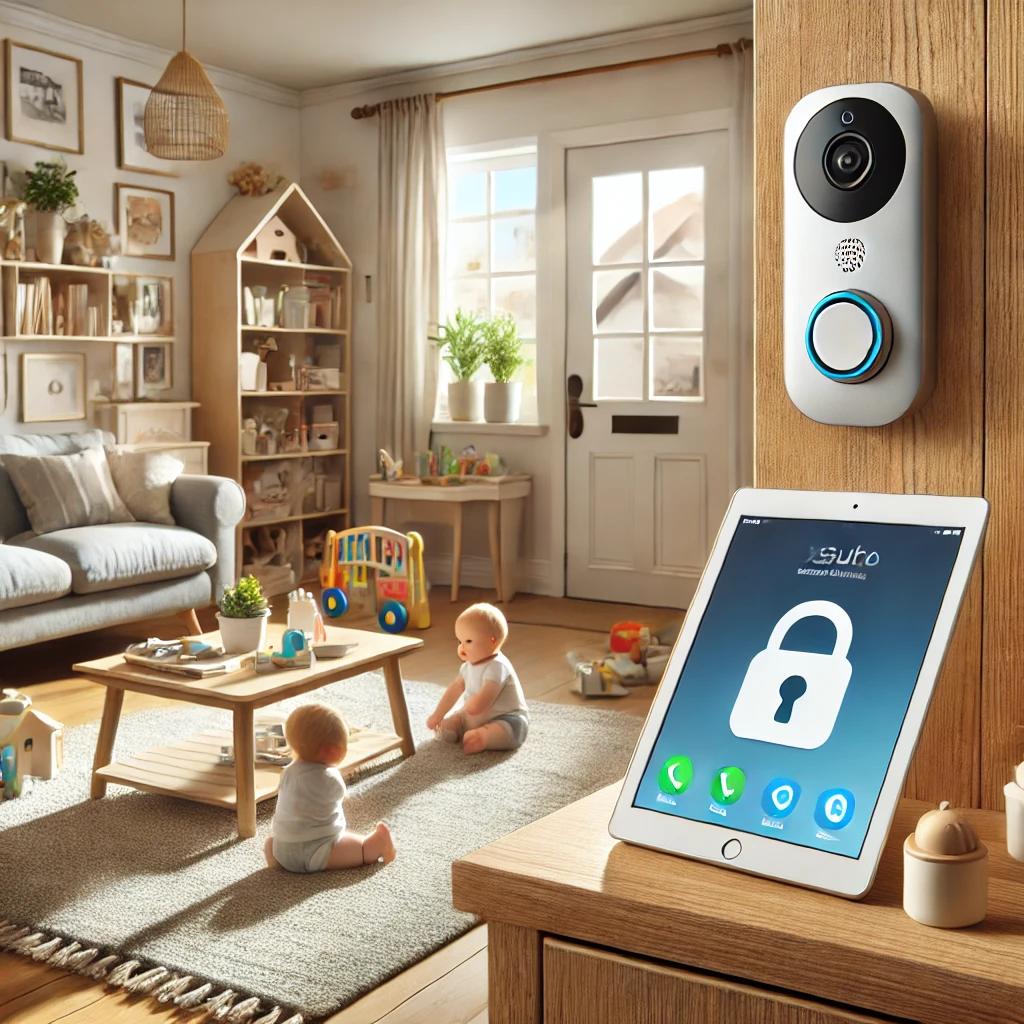For families with children, home security is about more than just protecting property; it’s about creating a safe environment for loved ones. Since young kids may not fully understand security risks, it’s essential to establish a system that’s both effective and child-friendly. From installing childproof locks to teaching kids safety rules, here are practical home security tips designed to keep children safe.
1. Set Up Childproof Locks and Door Alarms
Curious kids may wander into unsafe areas or even outside without understanding the risks. Childproof locks on doors, windows, and cabinets help keep them out of dangerous spaces. Door alarms are also effective, alerting parents if a door opens unexpectedly.
Tips:
- Childproof Window Locks: These prevent windows from opening fully, reducing the risk of falls.
- Door Alarms on Exterior Doors: These notify parents immediately if a child opens an outside door.
2. Teach Kids Basic Safety Rules
Teaching children basic home safety rules helps them understand their role in keeping the home secure. Encourage kids to avoid opening doors for strangers, not share personal information over the phone, and always report anything unusual to an adult.
Basic Rules to Cover:
- Answering the Door: Teach children to never open the door without checking with an adult.
- Emergency Contacts: Show kids important phone numbers, including parents’ cell numbers and emergency services.
- Identifying Safe Spaces: Designate areas where they can go in case of danger.
3. Install Security Cameras in Key Areas
Security cameras help monitor important areas around your home, such as entryways, backyards, and driveways. For families, cameras provide added peace of mind, letting parents check on kids playing outside or arriving home from school.
Best Places for Security Cameras:
- Entryways and Front Door: Monitor who enters and leaves the home.
- Backyard: Watch children playing outdoors.
- Driveway: Keep an eye on vehicles and nearby activity.
4. Use Smart Locks and Keyless Entry Systems
Smart locks offer a secure, convenient way to control home access without traditional keys. Keyless entry systems are helpful for families, allowing you to create temporary codes for babysitters or family members without needing to hand out physical keys.
Advantages for Families:
- Controlled Access: Set access codes for trusted individuals like babysitters.
- Monitor Door Activity: See who’s entering or leaving, especially helpful when kids are home alone.
5. Establish Safe Zones Inside the Home
Set up designated “safe zones” where kids can go during emergencies, such as during severe weather or a security incident. These should be easy for kids to reach but difficult for intruders to locate.
Safe Zone Tips:
- Choose an Interior Room: Rooms with fewer windows, like a bathroom or closet, are ideal.
- Stock Emergency Supplies: Include essentials like a flashlight, water, and emergency contacts.
- Practice Safety Drills: Conduct drills so kids know to go to the safe zone in an emergency.
6. Install Child-Friendly Motion Sensors
Motion sensors add security by detecting movement in restricted areas. Many systems allow alerts if a child enters a space with potential hazards, like a garage or basement. Choose sensors with customizable alerts to avoid false alarms for everyday activity.
Best Areas for Motion Sensors:
- Stairways: Alerts if children move between floors unsupervised.
- Garage or Basement: Monitors areas with potential hazards.
- Outdoor Areas: Detects when children enter or leave the yard.
7. Use GPS Trackers and Child Monitoring Devices
For families with young children or kids frequently on the go, GPS trackers add a layer of security. These devices allow parents to monitor their child’s location, whether they’re at school, on a playdate, or exploring the neighborhood.
Popular Options:
- Wearable GPS Trackers: Bracelets, watches, or small devices kids can wear.
- Parental Controls on Phones: Track older children’s locations without extra devices.
- Geofencing Alerts: Receive notifications if kids leave designated areas.
8. Incorporate Smart Lighting for Added Safety
Smart lighting is an easy way to enhance security and safety. Motion-activated lights or scheduled lighting around the home can brighten pathways, entrances, and other areas, helping kids navigate and deterring potential intruders.
Lighting Tips for Families:
- Pathway Lighting: Lights up outdoor paths to prevent trips and falls.
- Bedroom and Hallway Lights: Use night lights or low-level lighting for nighttime safety.
- Outdoor Motion Sensors: Illuminates the yard or entryway when someone approaches.
9. Establish a Family Emergency Plan
Every family should have an emergency plan. This plan should outline steps for fire, intrusion, or other crises. Practice the plan with your children regularly so they understand what to do if an emergency arises.
Emergency Plan Essentials:
- Outside Meeting Spot: Choose a safe location to meet in case of evacuation.
- Emergency Contacts: Ensure kids know how to reach emergency services and trusted adults.
- Practice Drills: Run scenarios like fire or intruder drills to reinforce the plan.
10. Secure Dangerous Items in Locked Cabinets
Household items like cleaning supplies, tools, and medications should be stored in locked cabinets, out of reach of children. Securing these items prevents accidental injuries and reduces the risk of hazards.
Items to Secure:
- Cleaning Supplies: Store chemicals in locked cabinets.
- Sharp Tools: Keep items like knives and scissors out of reach.
- Medications: Lock up all medications to prevent accidental ingestion.
11. Set Up Geofencing Alerts for Older Kids
For families with older children who walk to school or visit friends, geofencing can provide peace of mind. Geofencing allows you to create virtual boundaries and receive alerts when a child enters or leaves a designated area.
Benefits of Geofencing:
- Monitor Kids’ Movements: Receive alerts when kids arrive or leave school, home, or other set areas.
- Easy Setup: Most smartphones and GPS trackers offer simple geofencing features.
12. Use Video Doorbells for Front Door Security
A video doorbell lets you monitor who approaches the front door, providing a way for parents to screen visitors. Many video doorbells have two-way audio, allowing communication with visitors, especially useful when kids are home alone.
Advantages:
- Screen Visitors: Allows kids to see who’s at the door without opening it.
- Parental Control: Parents can monitor door activity even when away.
Conclusion
Home security for families with kids requires thoughtful planning and child-friendly safety measures. By installing childproof entry points, teaching kids essential safety rules, and incorporating smart security devices, you create a safe and secure home environment. These tips offer practical ways to protect your home and ensure your children feel safe, empowered, and prepared.
Investing in family-focused security features provides peace of mind, knowing both you and your children are protected. Start with the basics, and consider adding advanced options like GPS trackers and smart locks as your family’s needs grow.





